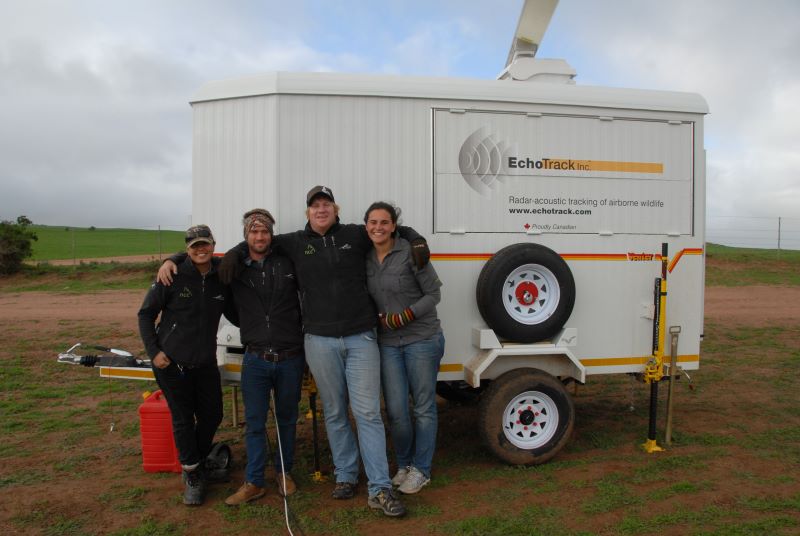
Applications

Environmental Assessment
In 2015, the International Energy Agency stated that renewable energy will represent the largest single source of electricity growth over the next five years. However, wind turbines and communication towers present potential risk to birds and bats.
Developers must fulfill the legal requirements of Wildlife Acts, Endangered Species Acts and Environment Assessment (EA) Acts as a required to proposed projects. EA includes pre–construction, installation and post–installation monitoring. Regulators require an increasing amount of data, in some cases, requiring a number of years study before and after development. Obtaining accurate visual census of airborne wildlife is not easy. This is particularly true during migration when flight densities can average over two birds per minute, in multiple directions and at altitudes well beyond the field of view; challenging during the day and even more so at night. In addition, the presence of listed species can affect approvals if appropriate mitigation is not in place.
EchoTrack Radar-Acoustic Surveillance System with nocturnal monitoring and specific identification capabilities, provides accurate information essential for good decision making. This can mean the difference between successful deployment and being locked in litigation. Other stakeholders in the EA area may include land developers, national/provincial/state parks, forest industry, wine industry, and the agricultural community.

Aviation Safety and Agricultural Applications
Airports represent a unique co-existence challenge. As large areas of predominantly natural terrain, they can be environmentally benign, and even beneficial, for many species over much of their area. But the risks to the traveling public, and the species themselves are high if they venture, at the same time, into certain locations such as an aircraft flight path. Current practice frequently involves broad and disruptive interventions. Dogs, explosives and other means can have high mortality rates and chase other species away entirely, rendering the airport more of a migration barrier than wildlife habitat and ecological asset. Real time radar-acoustic information can provide air traffic controllers and other airport personnel the bird flight density information they need to manage both bird and aircraft flight activity. EchoTrack can implement control mechanisms in conjunction with radar–acoustic sensing to condition resident and migrating populations to avoid danger areas, reducing collision damage and saving both human and avian lives.
Like aviation safety, crop loss due to birds is a significant issue that has inspired many forms of bird control The EchoTrack Radar–Acoustic Surveillance System fulfills the need for more efficient, effective controls to protect high-value crops and agricultural interests in areas such as orchards, vineyards, pesticide and pest control.

Conservation And Environment
Green tourism is a profitable business, with bird watching as the fastest growing pastime in North America. Governments charged with the mandate to identify critical habitat for protected species require an unbiased, multi-scale and cost efficient tool to identify where priority species fly and nest. Once identified, critical habitat must be protected. In North America, the stakeholders include the general public, insurance companies, industry (for example, forestry, agriculture) and all levels of government.
Contact Us
Please send me a message requesting for services and /or collaboration, potential speaking engagements, questions, and ideas.


